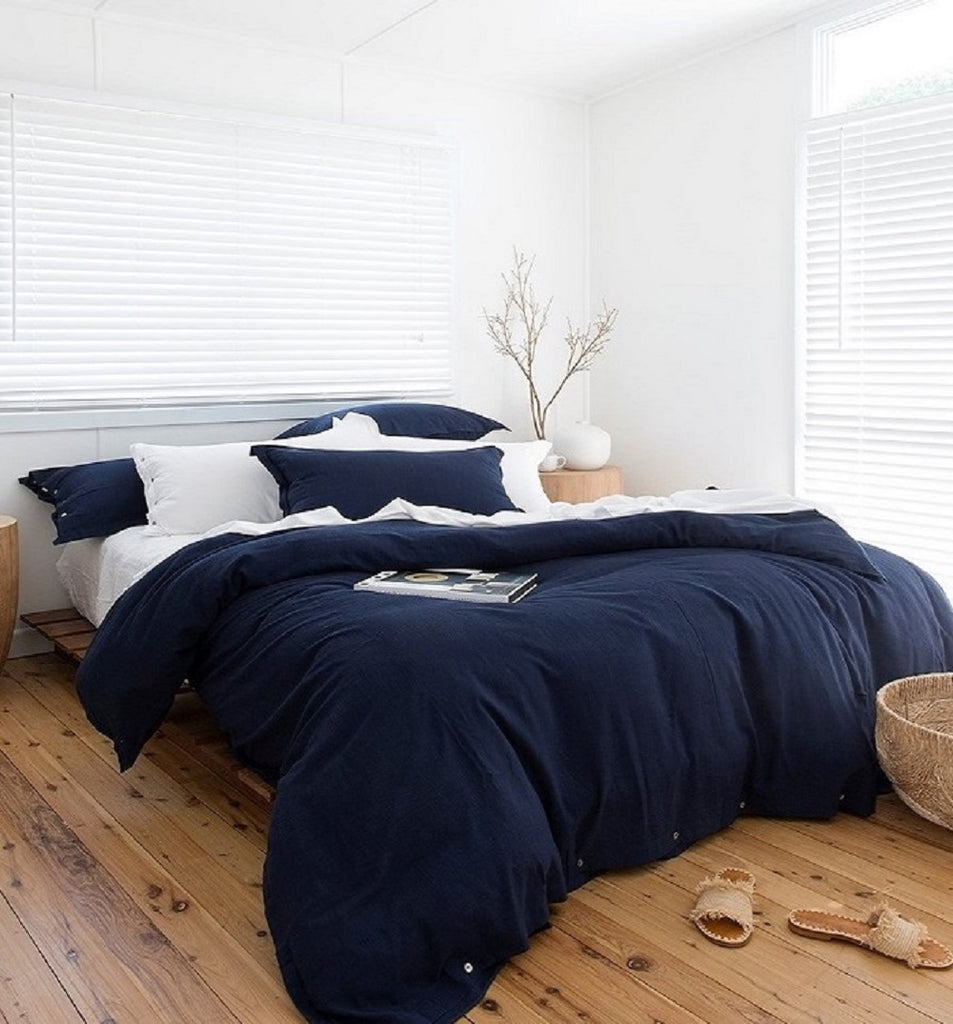
It's 2am in the morning, and you've been trying to get some much needed sleep for hours. But instead, you're tossing and turning, playing tug-of-war with the duvet, or wrestling with the flat sheet. The reason you can't get comfy could be that you made your bed all wrong, or not at all!
Try these 5 simple bed making tricks to help you have a comfy and inviting bed that lets you sleep easy.
1 THE FITTED SHEET
It's one of life's little mysteries: The annoying fitted sheet never stays in place, or worse, it disrupts your sleep every time it pops off!
So what's the problem? It usually boils down to one of two things:
One issue could be you're putting it on wrong: Look at the reverse side of your fitted sheet. One of the four corner pockets will have a tag or care lable sewn into the inside seam. For the perfect non slip fit, the seam with the tag belongs over the bottom right corner of the mattress. “Bottom Right” is looking at your mattress from the foot of your bed
Another issue could be, the sheet's depth is wrong: These days, mattresses come in a wide range of thicknesses, and the pocket depths of fitted sheets vary accordingly. When a fitted sheet does not have the right pocket depth for your bed, the corners will slip off easily, because the pockets are too shallow for your mattress, or they won't hold the sheet taut, because they're too deep. The solution here is to measure your bed for the right size of bottom sheet and get a new fitted sheet that actually fits. The average mattress is between 25-29cm deep. Fitted sheets with a 40cm depth should fit just fine. But if your mattress has a pillow top or is extra deep 33-40cm, you’ll need to get a fitted sheet with 50+cm depth.
2 POOR QUALITY SHEETS
Sheets have the power to improve or ruin your quality of sleep. Here's what you need to know so you can sleep well between the sheets:
• Sheets made with natural fibres let your skin breathe and tend to be softer than polyester sheets. Polyester sheets are sometimes called microfibre sheets, they are soft but will make you sweat as they are polyester and don’t allow your skin to breath. Bamboo is a naturally super soft fibre and is a great fibre for sheets. Bamboo bedlinen is hypoallergenic and moisture wicking which is perfect for a good nights sleep.
• Thread quality, not thread count: A high thread count doesn't necessarily mean the sheets are good quality. Check the type of yarn, natural is always better, for you and the environment. A high thread count is usually associated with 100% cotton, which is a great fibre but the high thread count can cause the lack of air circulation and make the sheets trap the air. The best thread count for sheets is between 200-400.
• If you sleep on a mattress that retains heat or you are a warm body and are prone to night sweats, sheets made of natural fibres like bamboo, linen or cotton will keep you cooler because they're naturally moisture-wicking. If your sheets aren't keeping you dry, try sheets with a cotton blend like bamboo cotton, bamboo is an eco-friendly fiber that's known to absorb moisture and keep you cool.
• Fresh clean sheets always feel good and can improve your sleep. Change your sheets weekly: Dirty sheets feel grubby, so changing them every seven days is a must for comfort. The rest of your bedding can be washed every 14 weeks.
3 LET YOUR BEDLINEN AIR
If you're tossing and turning at night is fuelled by an allergic reaction to dust mites, then the best time to make your bed is NOT right after you wake up. Experts recommend to leave your bed unmade for an hour or two, the air and light will dry up the moisture, and freshen up your bedlinen, reducing the dust mites and hopefully any allergic reactions.4 BEDLINEN LAYERING
What layers make up your bedlinen? This could be preventing your peaceful sleep!We often wake up at night because we're either too hot or cold, so consider layering your bedlinen. First, add a top / flat sheet to the mix, so it's in between you and the duvet. Just remember to tuck the flat sheet in so it doesn't slip around while you sleep. The top sheet allows you to throw off the duvet, if you get too warm, without freezing. Another tip, keep an extra blanket at the end of your bed, folding it skillfully in half so it’s easy to pull up over you if you get cold in the middle of the night.
5 YOUR PILLOWS
Do you love a pile of pillows on your bed? You need to make sure you wash them regularly, they can be bad news for your skin and health. Not only do they trap dirt, oil, and bacteria, which can cause acne, they also trap allergens that trigger sneezing and asthma.
Make sure you are sleeping with the correct pillows for neck and head support.
If you suffer from allergies, wash your pillows every few months, and your pillowcases every week.
Consider replacing your pillows every 3 – 4 years if your suffer from neck pain or allergies.

With these 5 bed making tips I hope you’ll find your sleep improves, and your days are more enjoyable!
Sweet dreams!



Leave a comment